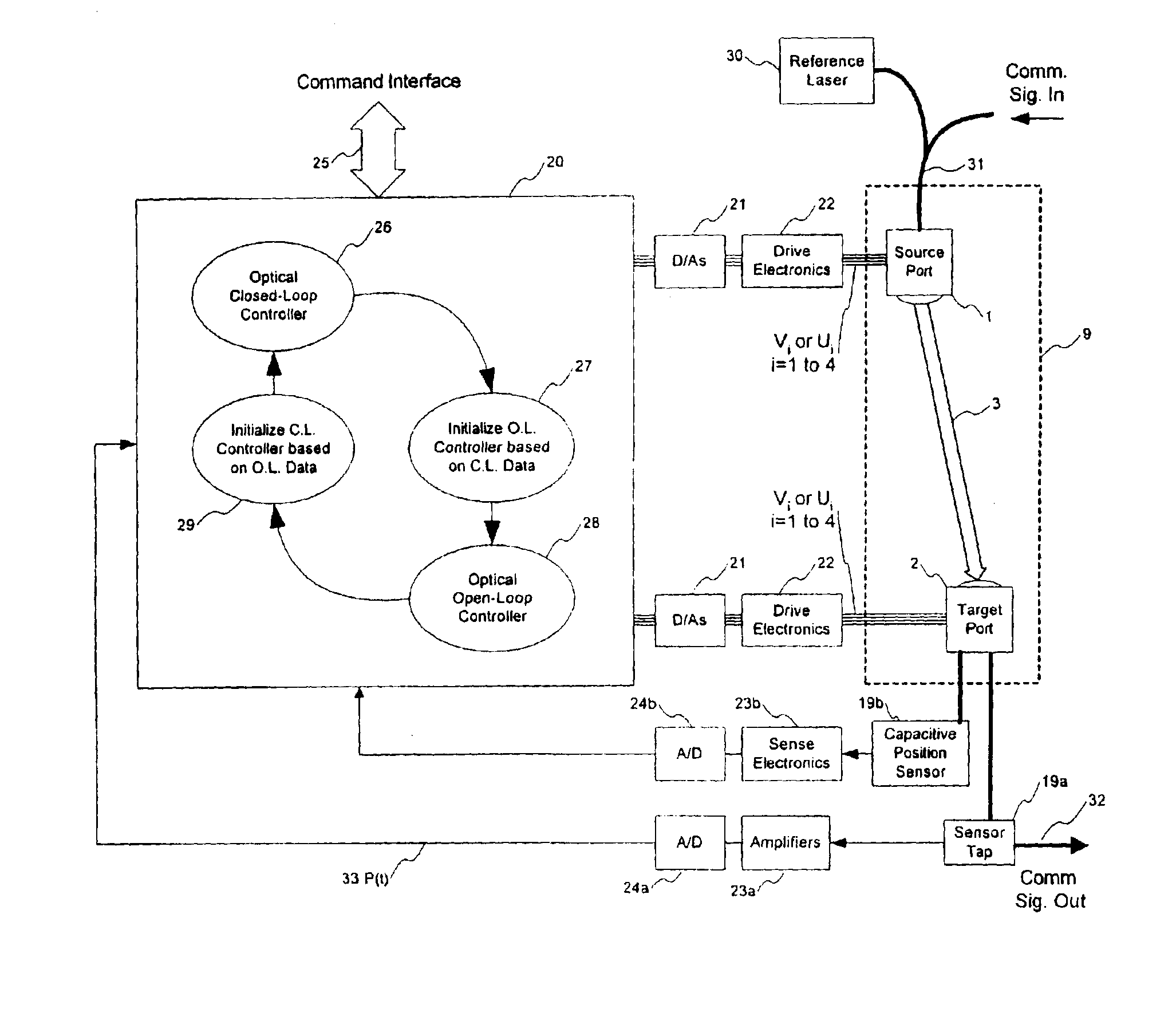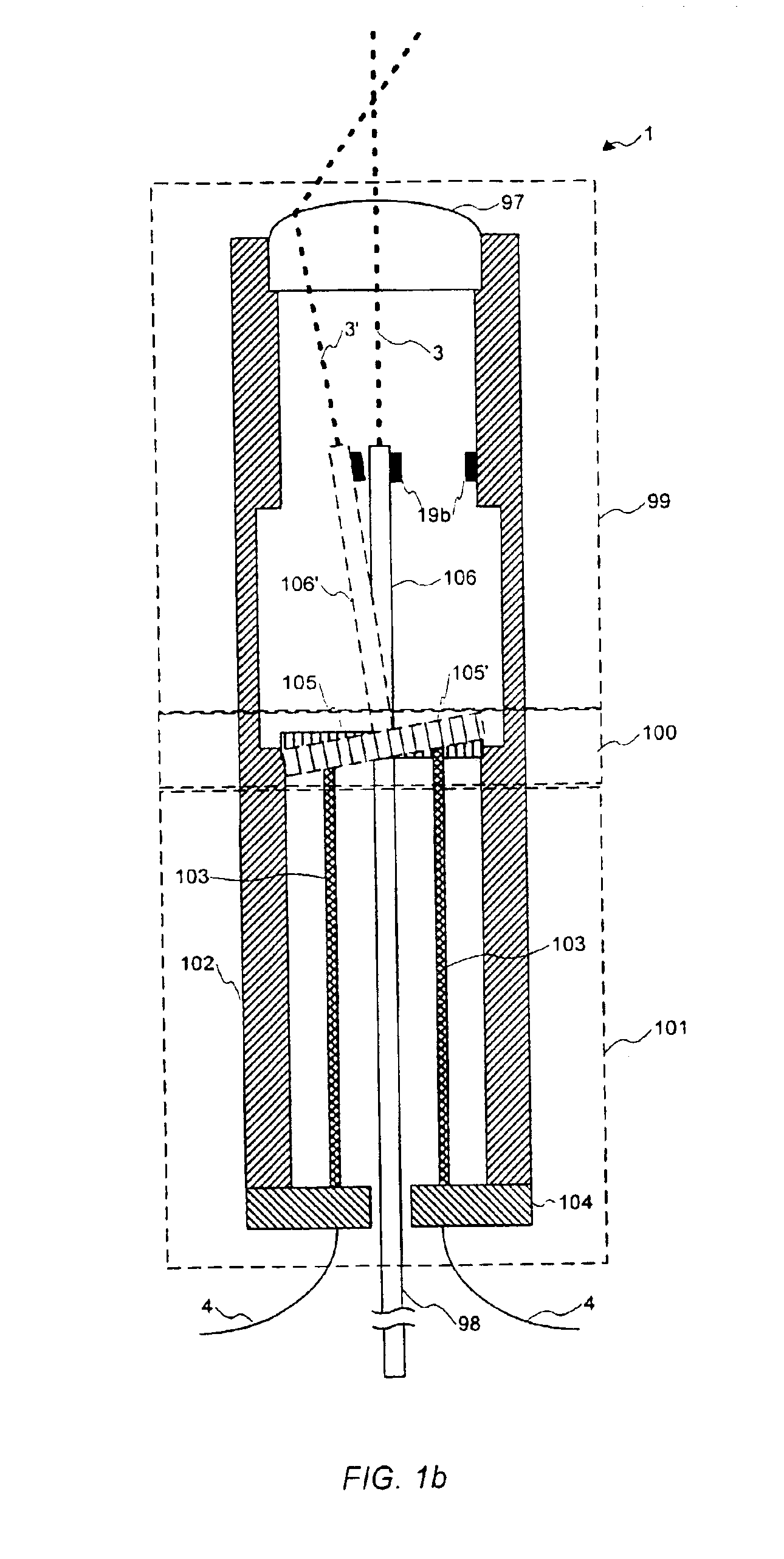Multiple-axis control system for an optical switch
a control system and optical switch technology, applied in the direction of optics, optical elements, instruments, etc., can solve the problem of not providing the fastest possible switching speed, and achieve the effect of quick moving or tilting the mirror and quickly setting the switch to a new position
- Summary
- Abstract
- Description
- Claims
- Application Information
AI Technical Summary
Benefits of technology
Problems solved by technology
Method used
Image
Examples
Embodiment Construction
[0039]A description of preferred embodiments of the invention follows.
[0040]FIG. 1A details a typical all-optical free-space cross-connect switch consisting of an optical fabric 9 that includes optical source port emitters 1 and optical target port receivers 2. The emitters 1 can be selectively connected to the receivers 2 by varying the direction of the collimated beam 3 so as to impinge on the selected receiver 2. This can be accomplished by directly controlling the horizontal and / or vertical tilt angle of one of the emitters 1 or receivers 2. In other embodiments, mechanical actuators may control the horizontal or vertical direction of one or more micro-mirrors that control the resulting beam 3 or its detection. Any combination of active and / or passive emitters and / or receivers can be combined to form 1×N, N×1, N×N or M×N switch assemblies. It should also be understood that the assembly is bidirectional, i.e., input ports 1 could be considered to be output ports 2 and vice versa....
PUM
 Login to View More
Login to View More Abstract
Description
Claims
Application Information
 Login to View More
Login to View More - R&D
- Intellectual Property
- Life Sciences
- Materials
- Tech Scout
- Unparalleled Data Quality
- Higher Quality Content
- 60% Fewer Hallucinations
Browse by: Latest US Patents, China's latest patents, Technical Efficacy Thesaurus, Application Domain, Technology Topic, Popular Technical Reports.
© 2025 PatSnap. All rights reserved.Legal|Privacy policy|Modern Slavery Act Transparency Statement|Sitemap|About US| Contact US: help@patsnap.com



